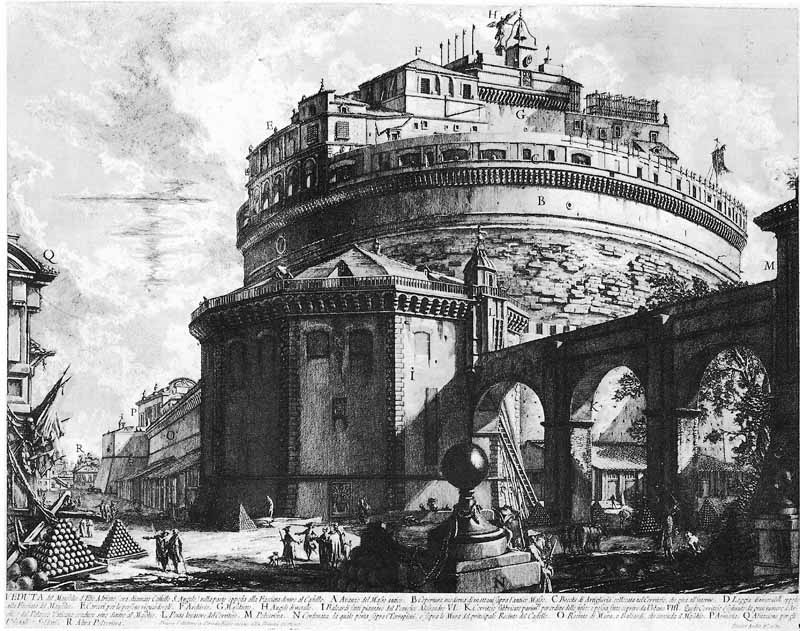
A house was subsequently built in a previous vineyard there. The location was privately owned on discovery of the tomb but was bought by the city in 1880 at the suggestion of Rodolfo Amedeo Lanciani. The tomb was rediscovered twice, the last time in 1780 and stands under a hill by the side of the road behind a wall at numbers 9 and 12 Via di Porta San Sebastiano, Rome, where it can be visited by the public for a small admission fee. Then it was abandoned and within a few hundred years its location was lost. The Tomb of the Scipios ( Latin: sepulcrum Scipionum), also called the hypogaeum Scipionum, was the common tomb of the patrician Scipio family during the Roman Republic for interments between the early 3rd century BC and the early 1st century AD. John Wilton-Ely (Giovanni Battista Piranesi, The Complete Etchings, San Francisco 1994), 134-268 & 1008 cf. Piranesi's popular Vedute, which eclipsed earlier views of Roman landmarks through their dynamic compositions, bold lighting effects, and dramatic presentation, shaped European conceptions to such an extent that Goethe, who had come to know Rome through Piranesi's prints, was somewhat disappointed on his first encounter with the real thing (Metropolitan Museum of Art).
#FRANCESCO PIRANESI SERIES#
By 1747, Piranesi had begun the work for which he is best known, the Vedute di Roma (Views of Rome), and he continued to produce plates for the series until the year of his death in 1778. Etching also provided Piranesi with a livelihood, allowing him to turn one of his favourite activities, drawing the ancient and modern buildings of Rome, into a lucrative source of income. The knowledge of ancient building methods demonstrated by Piranesi's archaeological prints allowed him to make a name for himself as an antiquarian. Quickly mastering the medium of etching, Piranesi found in it an outlet for all his interests, from designing fantastic complexes of buildings that could exist only in dreams, to reconstructing in painstaking detail the aqueduct system of the ancient Romans. Soon after his arrival in Rome in 1740, Piranesi apprenticed himself briefly to Giuseppe Vasi, the foremost producer of the etched views of Rome that supplied pilgrims, scholars, artists, and tourists with a lasting souvenir of their visit. Although he had limited success in attracting architectural commissions, this diverse training served him well in the profession that would establish his fame. Piranesi also received a thorough background in perspective construction and stage design. The son of a stonemason and master builder, he received practical training in structural and hydraulic engineering from a maternal uncle who was employed by the Venetian Water Authority while his brother, a Carthusian monk, fired the aspiring architect with enthusiasm for the history and achievements of the ancient Romans. The King spent the winter in Italy and Piranesi, no doubt eager to curry favour with the royal art lover revised the dedication of Antichita Romane, for the 1784 edition to 'Gustavo III…' One of the greatest printmakers of the eighteenth century, Piranesi always considered himself an architect. King Gustav travelled to Italy in 1783 buying, amongst other things, a magnificent collection of classical sculptures which are now held in the Museum of Antiquities in Stockholm, Sweden's oldest museum. A fine complete set of the finest illustrated book on Rome and one of the greatest series of engravings on any subject the images strong early impressions, clean and fresh.

From the library of Gustav III, King of Sweden (1746-1792), and his Queen Sophia Magdalena of Denmark (1746-1813).

Vaticano, both of these by Francesco Piranesi Near contemporary Russia gilt, the covers with broad gilt borders, neatly rebacked, all edges gilt. approx') Vedute: the complete suite as listed by Wilton-Ely comprising double-page engraved title, double-page engraved frontispiece, 135 double-page engraved plates (including the 2 plates by Francesco Piranesi listed at the end of Wilton-Ely), the watermarks examined appear to conform to Robison 39, 57, 64 and 67 plate 243 with paper flaw to the centre fold lower margin, not affecting image Pompei: the complete suite comprising a double-page engraved plate, a large folding plate and a 6-sheet plan, each sheet large and folding (3 with short marginal tear, repaired, 2 touching text) Extra-illustrated with the following plates: Pianta di Roma e del Campo Marzio Prospetto interiore del Tempio Vaticano Il Santo Padre. Two works in two volumes, folio (550 x 400 mm.


 0 kommentar(er)
0 kommentar(er)
